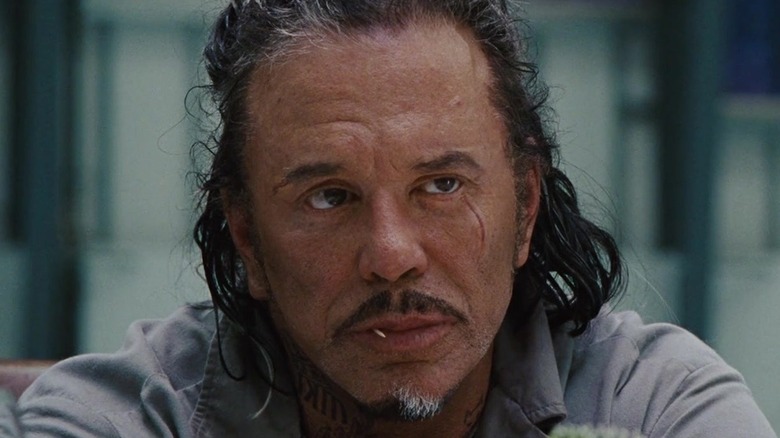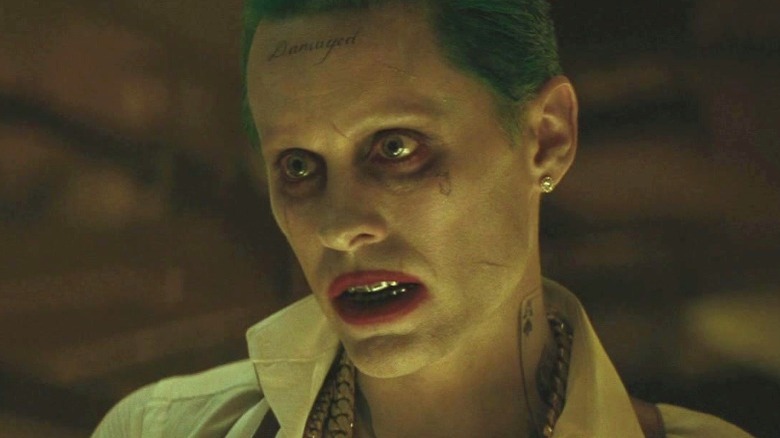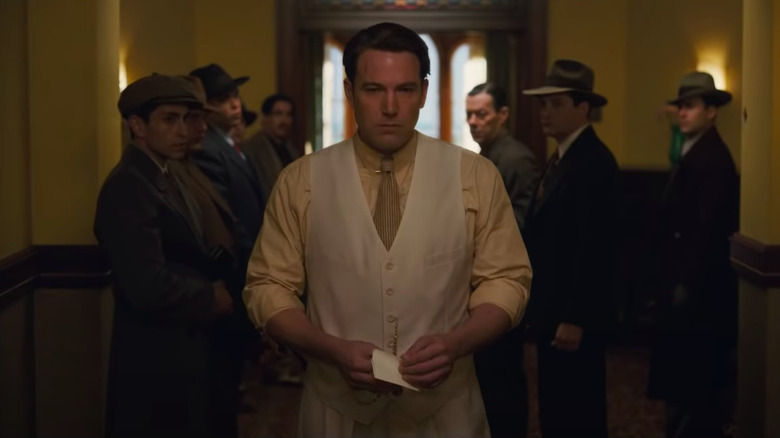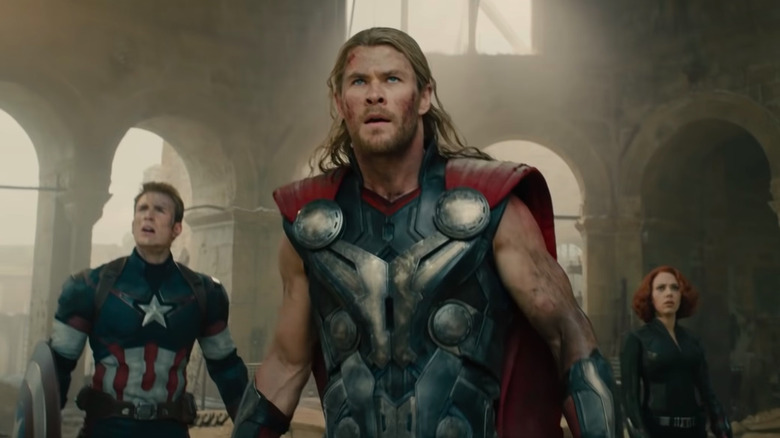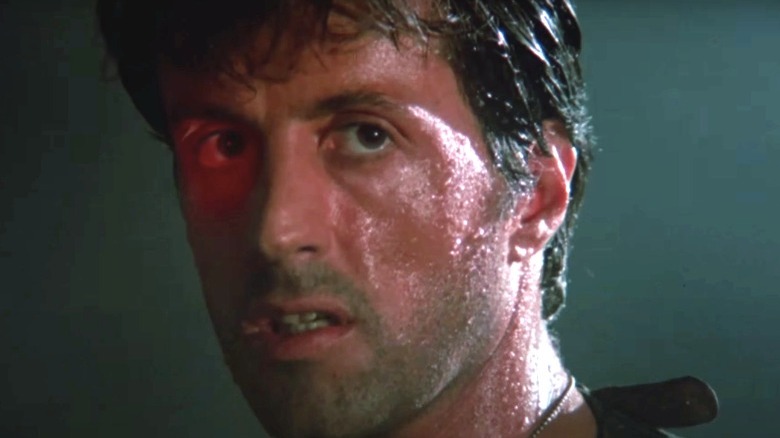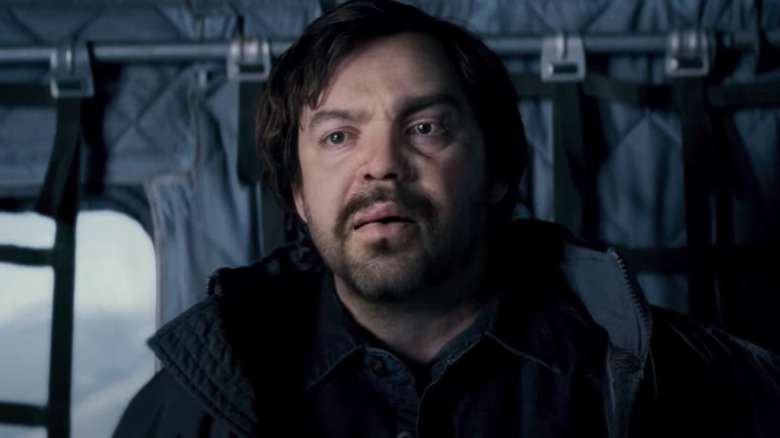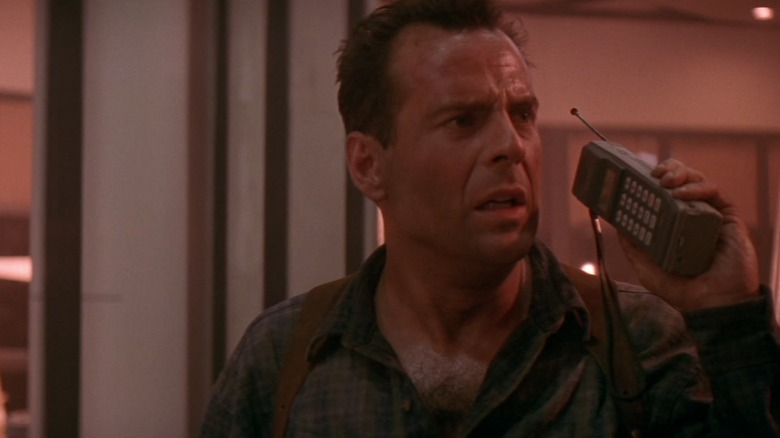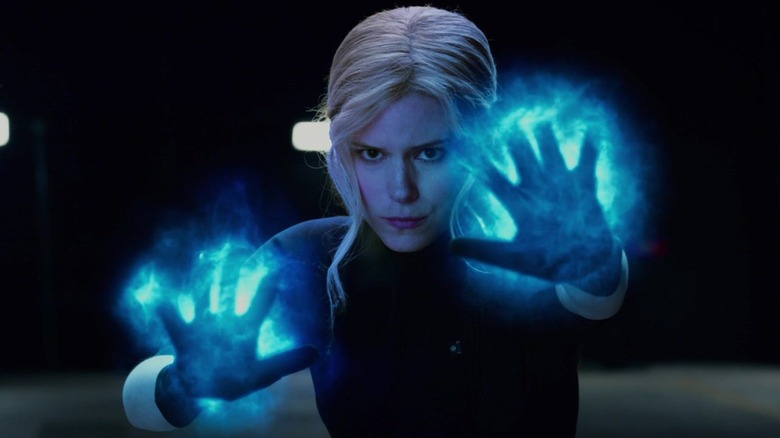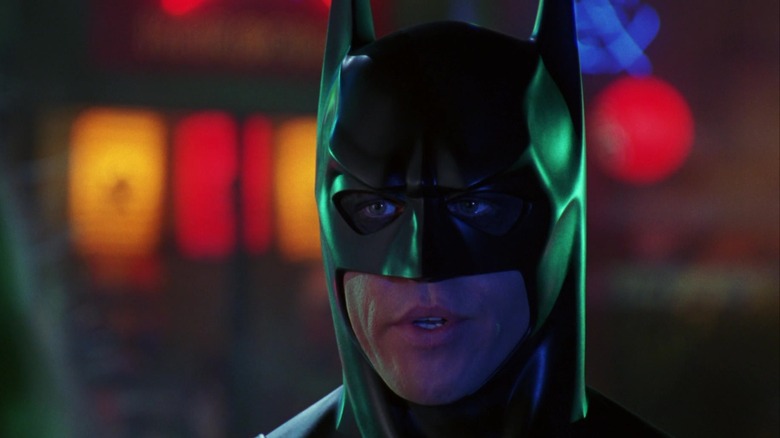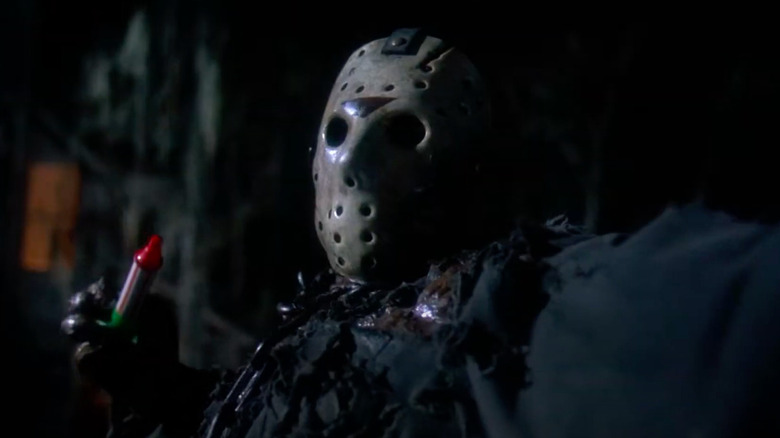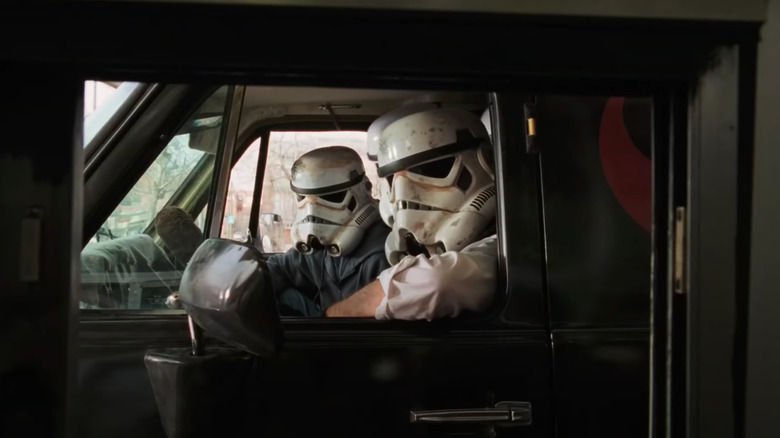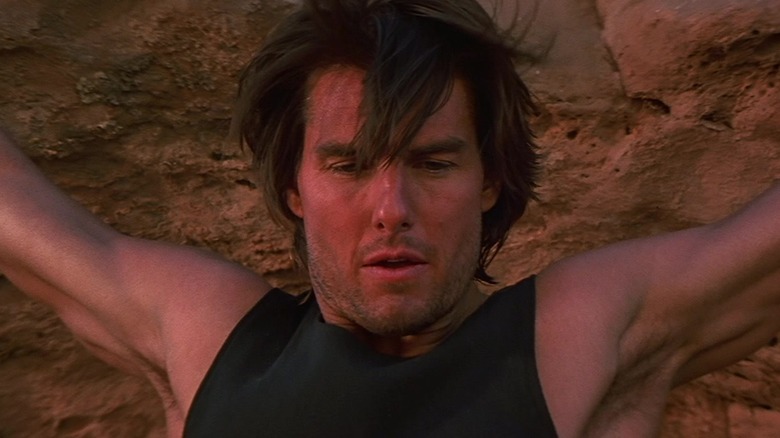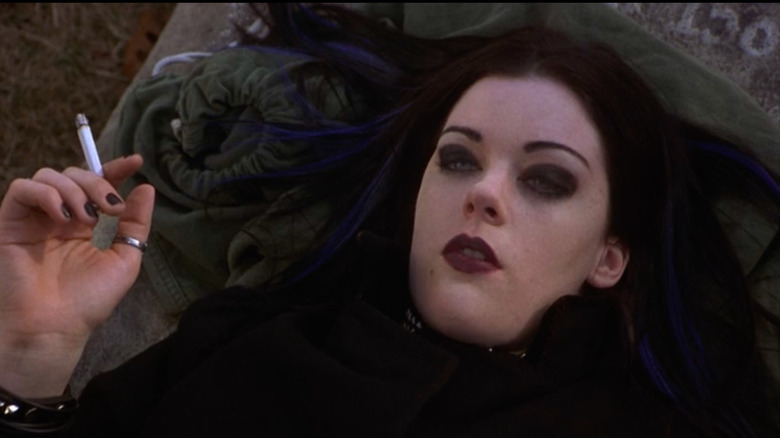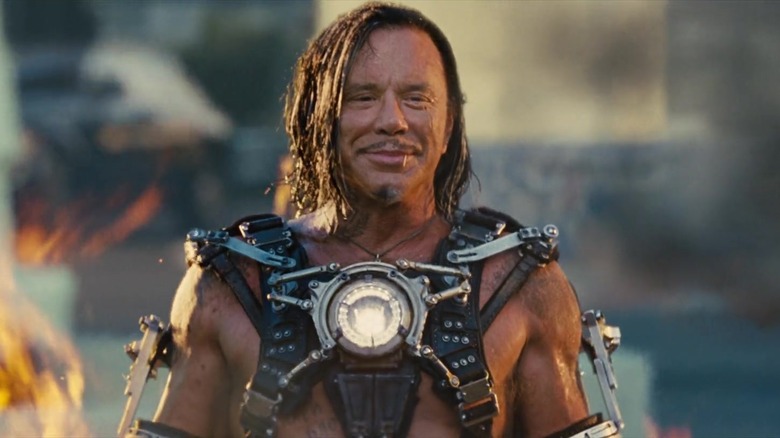Director's Cuts That Need To Be Made
In Hollywood, movies aren't made by individuals or even teams of skilled craftsmen. Unless a writer/director has the right of final cut cemented into their contract, they have no guarantee that their movie won't be taken away from them and turned into something else by studio executives who are more concerned with making money than making art.
Sometimes, a movie is shot one way and then released as something that does not represent the director's vision. There are countless bad movies that could have been good or even good movies that could have been great, save for the intervention of a greedy studio. Movies like "Zack Snyder's Justice League" and Sylvester Stallone's "Rocky IV: Rocky Vs. Drago" show that if the footage exists, it can be reassembled to create a vastly different movie than what audiences were treated to in theaters. Here are some Director's Cuts that should be completed and released for public consumption.
Suicide Squad
In the wake of WB's successful release of "Zack Snyder's Justice League," fans of the DCEU turned their sights to David Ayer's much-maligned 2016 team-up, "Suicide Squad." While it was a box-office smash to the tune of $746 million worldwide, the film was derided for its weak characters, slapdash editing, and paper-thin story.
After the film's release, it became clear something went wrong during post-production. Stories came out detailing the editing process and how "Suicide Squad" was altered to match the tone seen in the first trailer, regardless of writer/director David Ayer's original intent while shooting the film. Some characters had their roles severely reduced; most egregiously, Jared Leto's version of The Joker plays a negligible role in the final movie, and both Leto and Ayer have lamented how much footage of the character was unceremoniously removed.
An "Extended Cut" of "Suicide Squad" was released on home video alongside the theatrical version, but it doesn't add much aside from a couple of deleted scenes; it's not a game-changer like the "Ultimate Edition" of "Batman v Superman." Many actors and crew members involved with the production have expressed their support for a proper Director's Cut for "Suicide Squad," along the lines of "Zack Snyder's Justice League," but WB has been mum on the prospect. All the while, fans have taken to the internet, taking every opportunity to make #ReleaseTheAyerCut a trending social media topic.
Live By Night
"Live by Night" was poised to be Ben Affleck's magnum opus, a three-hour gangster epic, based on a critically acclaimed novel, set in the American South during Prohibition. Unfortunately, things didn't quite work out the way Affleck intended. The final film, a 129-minute mess held together by awkward voice-over narration to patch over the numerous excised sequences, failed to impress critics and bombed hard at the box office.
There are about 15 minutes of deleted scenes included on the home video release, but it's obvious "Live by Night" has a lot more on the cutting room floor. For instance, both Scott Eastwood and Titus Welliver acted in the movie, and while Welliver receives billing in the end credits, neither actor actually appears in the finished film. So much of "Live by Night" remains unseen by the public, and if Affleck ever wants to return to the film and re-edit it into his definitive Director's Cut, we'll be there to see it.
Avengers: Age of Ultron
As it stands, "Avengers: Age of Ultron" is not a bad film, and its positive reputation has only grown as subsequent Marvel projects have expanded upon its numerous plot threads. However, it is a BIG film, with such a grandiose and densely thematic script that it can be a bit of an unruly beast when taken on its own merits. Still, it's a miracle the film is as good as it is since writer/director Joss Whedon reportedly butted heads with Marvel's Creative Committee, a team of bigwigs who frequently clashed with filmmakers over the decisions made for each MCU film.
For "Age of Ultron," the Creative Committee was against setting a significant portion of the film on Hawkeye's family farm, and only agreed to it if Whedon included the oft-maligned "Thor in a cave" sequence, which itself was significantly cut down from what was initially shot. There were also rumors of an extended cut that would add at least a half-hour of footage to the film, though no MCU movie has ever received an official extended cut.
Whedon deserves another shot at "Age of Ultron," a chance to re-edit his existing footage without the intervention of the Creative Committee, especially if he can do so without breaking the precious canon that has evolved in the years since the film's initial release. And while we're at it, how about cleaning up some of the wonky CGI during the opening raid on the HYDRA base?
Cobra
The Hollywood legend goes that Sylvester Stallone's 1986 hard-boiled cop thriller, "Cobra," was slapped with an X-rating by the ratings board, at which point it was recut from its original two-hour running time down to a lightning-fast 87 minutes.
There's nothing really wrong with the theatrical cut of "Cobra." In fact, while it was critically reviled in its day, contemporary reviews call it a masterpiece of Western-infused neo-noir storytelling, with Stallone as the ultimate hard-edged tough guy. Still, the original cut of the film would have likely played out as a mix of "Friday the 13th" meets "Dirty Harry," with both the hero and his villains portrayed as brutal in their methods. As it is, the theatrical version is still extremely violent, but not as uncomfortably so as the original cut, which has never been released in any official capacity.
Stallone loves re-editing his movies, with the two most recent "Rambo" films, "The Expendables," and "Rocky IV," all getting new versions that significantly improve upon their theatrical editions. Maybe "Cobra" should be next!
The Thing
Director Matthijs van Heijningen Jr. took on an impossible task when he signed on to helm the 2011 remake/prequel to John Carpenter's seminal 1982 horror classic, "The Thing." The movie was always doomed to failure, since fans of the original would never accept a new movie stepping on the toes of their beloved classic, seeing the new film as nothing but a cheap cash grab, regardless of its own artistic merits. Unfortunately, the studio forced the creative team to completely change the final act and replace the beautiful practical effects of Amalgamated Dynamics with CGI. The final theatrical film, while not a complete dud, clearly suffers from this studio intervention, as its ending borders on nonsensical, and the CGI effects are woefully inconsistent; some shots look amazing, while others look rushed and incomplete.
For a decade now, fans have asked for a true Director's Cut of "The Thing" 2011, restoring the original ending and reverting the effects back to their practical roots — the original plan for the CGI team to use their computer wizardry to enhance the practical effects, not to literally paint over the entire Thing, pun intended. A Director's Cut of "The Thing" would restore the effects to their original glory while retaining the unused ending that was thrown out in favor of an alien that looked like a collection of Tetris blocks (no, really).
Die Hard 2
Renny Harlin's "Die Hard 2" increased the violence from the original, which was already full of brutal kills. But for the first sequel in Bruce Willis' action franchise, he upped the ante with such grisly moments as McClane stabbing a bad guy in the eye with an icicle, crushing a villain's head in a baggage conveyor belt machine, and throwing John Amos, the dad from "Good Times," into a jet engine. However, in the original version of the film, all of these scenes and many more were even more violent, causing the MPAA to give the film an NC-17 rating. The final theatrical version, while still a fine action film in its own right, suffers from choppy editing during its action scenes, clearly a result of these cuts.
The "Die Hard" films have been re-released multiple times on home video, with the superior Unrated cut of "Live Free or Die Hard" effectively replacing its PG-13 counterpart; Renny Harlin deserves the chance to restore Die Hard 2 to its uncut glory, perhaps in time for a new 4K Blu-ray boxed set.
Fantastic Four
The theatrical cut of Josh Trank's 2015 "Fantastic Four" reboot is not the movie he set out to make. In fact, Trank controversially tweeted as much, saying: "A year ago I had a fantastic version of this. And it would've [received] great reviews. You'll probably never see it. That's reality though." The film was notoriously reshot and recut before its release, with Kate Mara's extremely fake wig clearly denoting which scenes were made without Trank's involvement. The final product was a critical and commercial failure.
Trank told Screen Rant in 2020, "We all know, obviously, Fantastic Four wasn't my cut." Much of Trank's original footage, and even footage from the first round of reshoots, was left out of the finished film. Sequences depicted in the trailers are absent from the movie, which is disjointed and missing chunks that could have made the narrative more cohesive. There's no doubt Trank's original footage exists, though it would likely require millions of dollars worth of VFX work to make a Snyder Cut-esque definitive edition of "Fantastic Four."
While Trank has moved on from the whole affair, he diplomatically told Screen Rant: "It was just the wrong combination of people to make something together. That was a group of people who just did not see eye to eye. We were all responsible for it not being a coherent movie. Everybody saw a different version of what movie they wanted it to be."
Batman Forever
Val Kilmer's sole outing as Gotham's Dark Knight, "Batman Forever," was a massive commercial success, but failed to impress critics and is generally regarded as a lesser film than its predecessors, which starred Michael Keaton as Bruce Wayne/Batman. While "Batman Forever" still has its share of defenders thanks to its all-star cast, inventive action sequences, gorgeous production design, and outstanding music from Elliot Goldenthal, it could have been even better.
Following the 2020 death of director Joel Schumacher, word began to spread about his original Director's Cut of "Batman Forever," which potentially contains numerous deleted scenes that could significantly enhance the film. There are numerous deleted scenes, such as an alternate opening showing Two-Face escaping from Arkham Asylum and a whole new storyline about Bruce rediscovering his Batman identity after being shot by Two-Face that are absent from the theatrical cut, but present in comic and novel adaptations.
An official Director's Cut of "Batman Forever" would serve as a definitive edition of the divisive superhero movie, as well as a fitting tribute to Joel Schumacher, who earned praise and scorn for his dramatic reinvention of the Batman mythos.
Friday the 13th Part VII: The New Blood
By the late 1980s, the "Friday the 13th" movies were under siege from the MPAA, the ratings board that notoriously cracked down on violence, particularly in the teen-oriented horror series. While "Friday the 13th Part VI: Jason Lives" was able to sidestep the issue by avoiding too much onscreen bloodshed, the 1988 entry, "The New Blood," was not so lucky; despite being released with an R rating, much of the blood and gore was stripped out of the slasher sequel. The end result is a movie with kills that lack the visceral impact one might expect.
The more recent home video releases of "Part VII" feature workprint footage of nearly every kill in the film, how they were originally intended to be seen: bloodier, gorier, and nastier than ever. The death of Ben, in particular, is downright gross, with Jason crushing his head into a bloody mush with his bare hands. Alas, the workprint footage is of poor quality, but reintegrating the complete kills into the movie has long been a dream scenario for cinematic gorehounds.
Fanboys
Considering the real-life crimes of Harvey Weinstein, transforming movies into lesser versions of themselves seems trivial by comparison. Still, his intervention hurt the final cut of the 2009 indie comedy, "Fanboys," a road trip movie about a group of friends on a road trip to sneak into Skywalker Ranch and steal the rough cut of "Star Wars Episode I: The Phantom Menace."
When the film was first screened at the European Star Wars Celebration convention, the reception was more than director Kyle Newman could have ever hoped for. Alas, as he recounted to Thrillist, "No one else has ever seen that cut of the film." On orders from Weinstein, the filmmakers were forced to add new scenes of raunchy comedy in order to appeal to a wider audience. These reshoots included an off-putting amount of gay jokes.
Co-writer Ernest Cline said, "It would also be nice to do a director's cut of 'Fanboys' to remove all of the gay panic & gross-out humor they forced us to add." Newman posited the same notion, saying he'd like to cut some of the lines added in the Weinstein reshoots. This is a case where the Director's Cut would likely be shorter than the theatrical version, but the result would be a better movie that doesn't punch down at marginalized people.
Mission: Impossible 2
Nowadays, "Mission: Impossible II" is seen as the weakest entry in the Tom Cruise spy franchise, but it was a huge hit when it first released back in 2000, thanks to the star power of Tom Cruise and the signature visual style of director John Woo, who revolutionized the Hong Kong action scene with movies like "A Better Tomorrow," "The Killer," and "Hard Boiled." The team-up of Cruise and Woo was seen as a dream combination, and proved a recipe for box-office success.
Still, the finished film, in hindsight, suffers from action sequences that were clearly edited down to a PG-13 rating. There are multiple instances of characters performing neck snaps that lack the requisite bone-crunching sound, and the numerous extended gunfights that notably lack even a drop of blood. It's a situation where the numerous minor edits add up and result in a film that doesn't carry the same punch as other entries in the series, which aimed for a hard PG-13 from the outset. Now that the "Mission: Impossible" franchise is at its peak following the success of its sixth entry, "Fallout," perhaps it's time for Paramount to revisit the proverbial black sheep of the franchise — maybe as a Paramount Plus exclusive?
Book of Shadows: Blair Witch 2
The original "Blair Witch Project" is one of the most influential horror films ever made. The sequel, 2000's "Book of Shadows: Blair Witch 2," is not. In fact, it's pretty unanimously disliked, particularly because of the numerous changes that studio Lionsgate forced upon director Joe Berlinger; his plans for a linear narrative were dashed in favor of a story that cut between time periods, and extraneous sequences of blood and gore were added to make the film more conventional.
Lionsgate has never given "Book of Shadows" a proper Director's Cut re-release, though Berlinger's publicly available notes and deleted scenes spurred fans to recut the film to his specifications — unofficially, of course. When restored to its original intent, "Blair Witch 2" turns into a subversive descent into madness that may or may not have any supernatural elements at all, depending on how one chooses to interpret its events. As an added bonus, swapping out Marilyn Manson's "Disposable Teens" for Frank Sinatra's "Witchcraft" gives the film a more timeless quality that doesn't feel like it panders to, well, disposable teens.
Iron Man 2
Mickey Rourke was reportedly unhappy with how his "Iron Man 2" character, Ivan Vanko, was reduced to a stock villain, as opposed to the fully formed three dimensional character he created on set. Mickey Rourke described the Marvel leadership at the time as "breaking [Jon] Favreau's balls" in terms of making Vanko a standard mustache-twirler in spite of everything the writer, director, and actors came up with during production (via Screen Rant).
Today, "Iron Man 2" is seen as one of the weaker entries in the MCU, though it certainly has its fans. Still, even the film's most ardent defenders must admit "Iron Man 2" pulls its punches when it comes to characterizing Vanko, who has a justified grievance against the Stark family. Now that the dust has settled on the Infinity Saga, maybe it's time for Kevin Feige to make things right by Favreau and Rourke by releasing a new edit of "Iron Man 2," with more of Rourke's character development intact.
As it stands, "Iron Man 2" doesn't confirm whether or not Vanko's father was guilty of the crimes that got him deported back to Russia, or if Howard Stark betrayed him to get full credit for the Arc Reactor technology. Perhaps that particular ambiguity works in the film's favor, but if Favreau and writer Justin Theroux originally wanted to paint the Stark family in a non-flattering light, they deserve the chance to show their original vision to the public.
